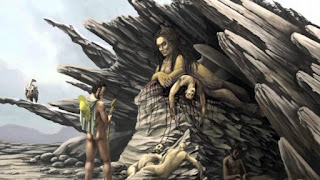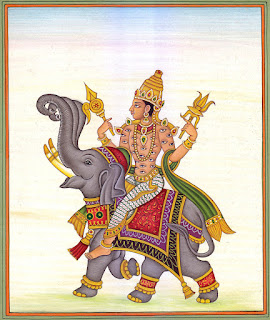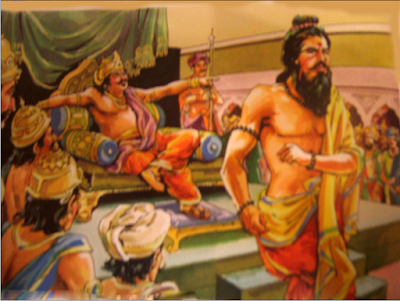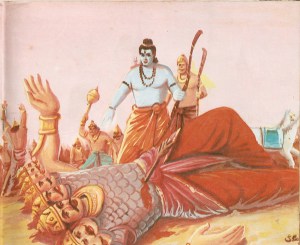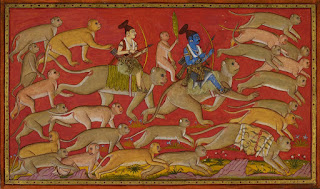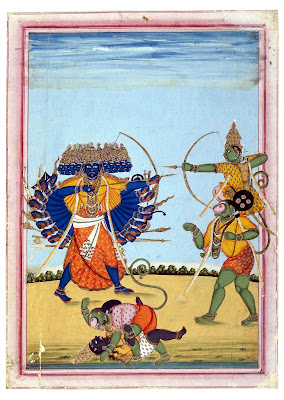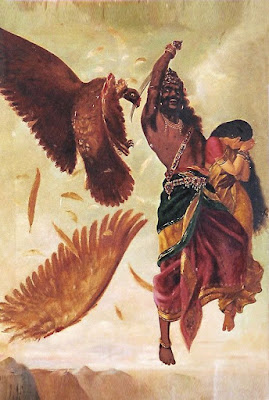Week 7 Reading Part D: Mahabharata
In Part D of the reading, the story that attracted me most was Ashwatthaman's Jewel. The reason for this was it would give me something in the D&D stories that I have been missing, something crucial to a good D&D campaign. This missing element is a Big Bad Evil Guy (BBEG), and while Dee-yem is an antagonist, he is not actively evil or against the quintet, and this is the role Ashwatthaman can fill. I went beyond the reading to find out more about him, because the idea he was almost immortal due to the gem in his head, as well as the continued legends until today, allow for a lot of artistic liberty with the character. The story itself is somewhat vague on the hunt to retrieve the gem from his head, so that angle is something I would like to bring out more, because it would be an adventure/encouter for the hero's, direct conflict other than running from an overwhelming horde. Ashwatthaman, from detechter Bibliography: Indian Myth and Legen...
